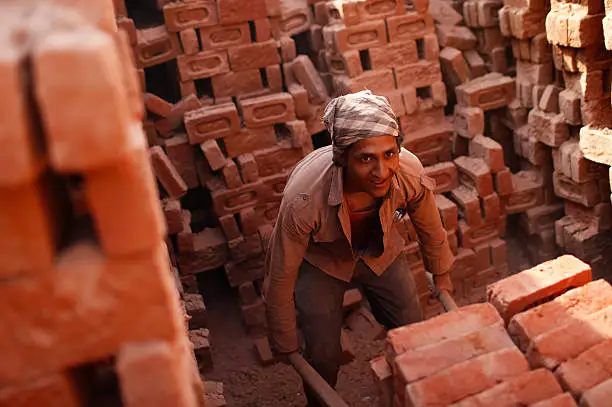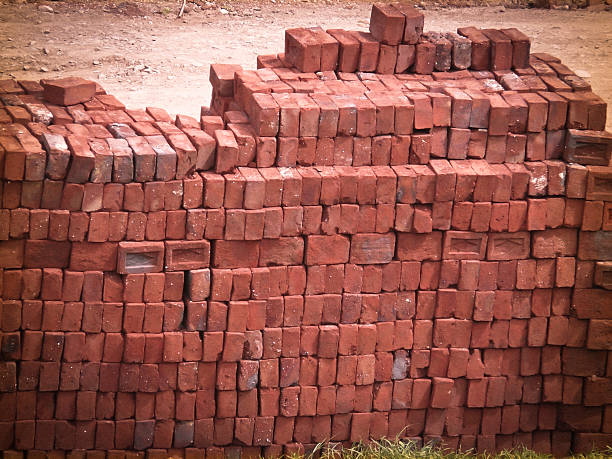The Supreme Choice: 6 Unlocking the Best-selling Benefits of Red Brick

Red Bricks There’s a reason some things never go out of style. Think of a classic leather jacket, a well-worn paperback, or the humble red brick. For centuries, this iconic building material has been the backbone of our homes, streets, and cities, offering a unique blend of rugged durability and warm, inviting beauty.
But what is it about red brick that makes it so perennial? Is it just a nostalgic throwback, or does it have a place in the modern home? Let’s dive into the world of red bricks and uncover why they remain a top choice for builders and homeowners alike.
A (Very) Brief History of the Red Brick
The story of brick is ancient, but the distinctive red color we know and love comes from the chemistry of its main component: clay. When clay rich in iron oxide is fired in a kiln, it undergoes a chemical transformation, turning it that classic shade of red. This process has been refined over millennia, from sun-dried mud bricks in ancient Mesopotamia to the strong, standardized units that built the Roman Empire and, later, the industrial revolution.
The red brick is more than just a material; it’s a piece of history in your hand.

Why Choose Red Brick? Red Brick The Top Benefits
Beyond its good looks, red brick is a practical and powerful building choice. Here’s why:
- Unmatched Durability: Brick is incredibly resilient. It’s resistant to fire, wind, and moisture. A well-built brick structure can last for hundreds of years with minimal maintenance, standing strong against the elements.
- Excellent Insulation: Brick provides fantastic thermal mass. This means it absorbs heat during the day and slowly releases it at night, helping to regulate indoor temperatures naturally. This can lead to lower energy bills and a more comfortable living environment year-round.
- Low Maintenance: Unlike wood that needs painting or siding that can warp, brick requires very little upkeep. An occasional rinse with a hose is often all it needs to look fresh for decades.
- Eco-Friendly & Sustainable: Brick is made from abundant natural materials—clay and shale. It’s 100% recyclable and doesn’t off-gas any toxic chemicals, making it a healthy choice for your home and the planet.
- Timeless Curb Appeal: Red brick offers a warmth and character that is difficult to replicate. It provides a solid, grounded feel to a home, boosting its aesthetic and resale value.
Not All Red Bricks Are Created Equal
You might be surprised to learn there are different types of red brick, each with its own personality:
- Pressed Brick: Dense, smooth, and uniform. These are often used for a clean, modern look.
- Extruded Brick: Durable and common, with holes (called cores) that make them lighter and improve insulation.
- Handmade or Sandstruck Brick: These have a rustic, irregular texture with soft edges and a vintage appeal. Perfect for adding character and a sense of history.
- Common Burnt Clay Bricks: The workhorse of the brick world, often used for structural walls that will be plastered over.
- Paving Bricks: Denser and harder, designed to withstand foot traffic for patios, walkways, and driveways.

Red Brick in Modern Design
Forget any notion that brick is old-fashioned. Today’s designers are using red brick in stunningly contemporary ways: https://en.wikipedia.org/wiki/Brick
- The Modern Minimalist: Pair sleek red brick with large black-framed windows and sharp, clean lines for a striking contrast.
- Industrial Chic: Combine exposed red brick walls with steel beams, concrete floors, and reclaimed wood for that sought-after loft aesthetic.
- Warm Contrast: Use the warmth of red brick to balance cool tones like gray, white, and stainless steel, creating a space that feels both modern and inviting.
- Landscaping Accents: Use reclaimed red bricks to create beautiful garden paths, retaining walls, or classic herb spirals.
Caring for Your Red Brick
To keep your brickwork looking its best:
- Clean it with a brush and a mild detergent solution. Avoid harsh pressure washing, which can damage the mortar and surface.
- Repoint mortar joints when they become cracked or crumbly to maintain structural integrity and weatherproofing.
- Seal it with a breathable penetrating sealer if you’re in an area with severe weather or to prevent staining, but consult a professional first, as brick needs to breathe.
The Bottom Line
Red brick is more than just a building blockcwith red brick; it’s a testament to timeless design, incredible strength, and natural beauty. It’s a material that tells a story—one of heritage, craftsmanship, and a warmth that only improves with age.
Whether you’re building a new home, adding an extension, or simply appreciating the architecture around you, the humble red brick deserves a moment of recognition. It’s the classic choice that never really went away, and for good reason.
red bricks,red brick
